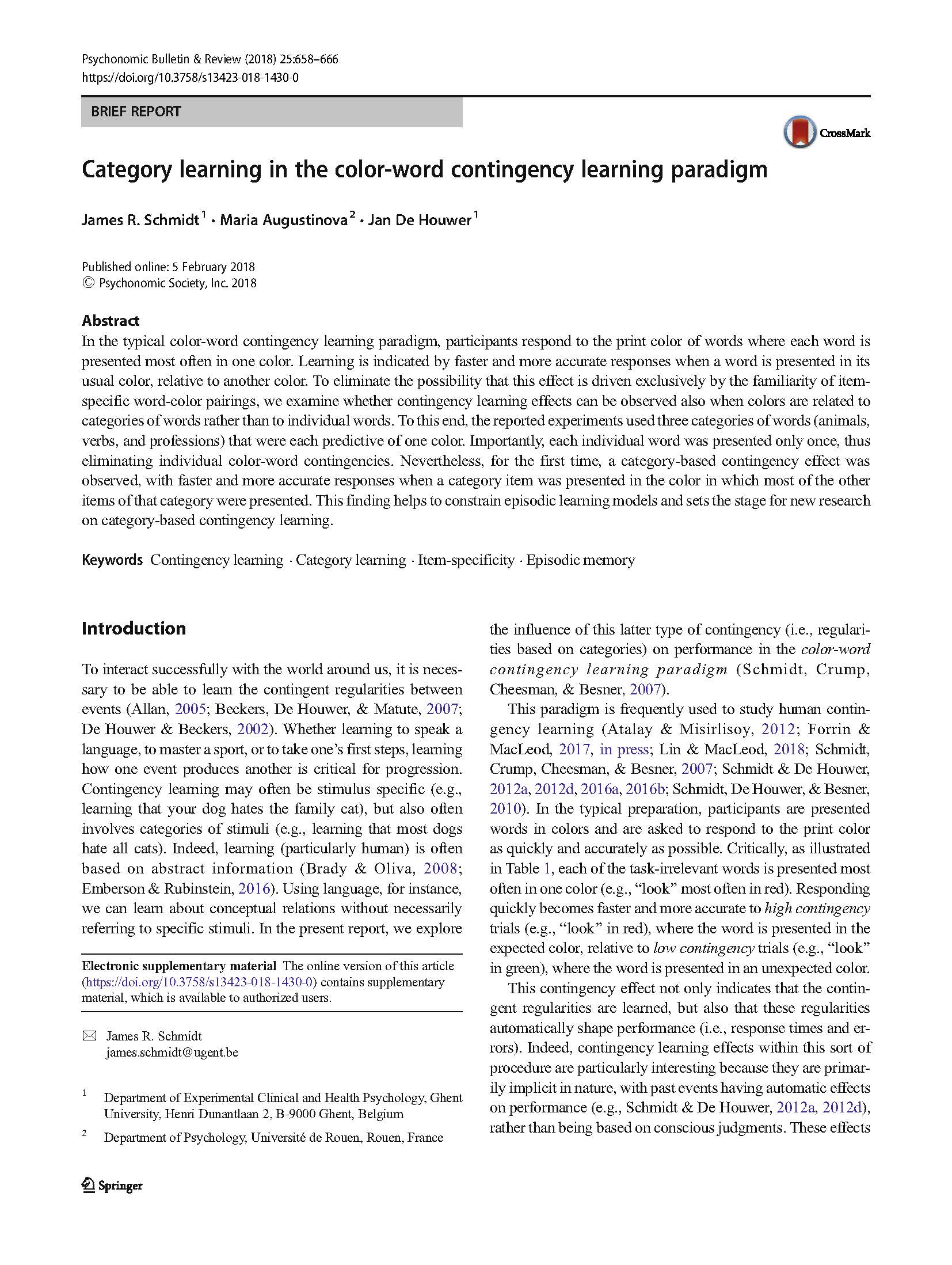In the typical color-word contingency learning paradigm, participants respond to the print color of words where each word is presented most often in one color. Learning is indicated by faster and more accurate responses when a word is presented in its usual color, relative to another color. To eliminate the possibility that this effect is driven exclusively by the familiarity of itemspecific word-color pairings, we examine whether contingency learning effects can be observed also when colors are related to categories of words rather than to individual words. To this end, the reported experiments used three categories of words (animals, verbs, and professions) that were each predictive of one color. Importantly, each individual word was presented only once, thus eliminating individual color-word contingencies. Nevertheless, for the first time, a category-based contingency effect was observed, with faster and more accurate responses when a category item was presented in the color in which most of the other items of that categorywere presented. This finding helps to constrain episodic learning models and sets the stage for new research on category-based contingency learning.
Category learning in the color-word contingency learning paradigm
